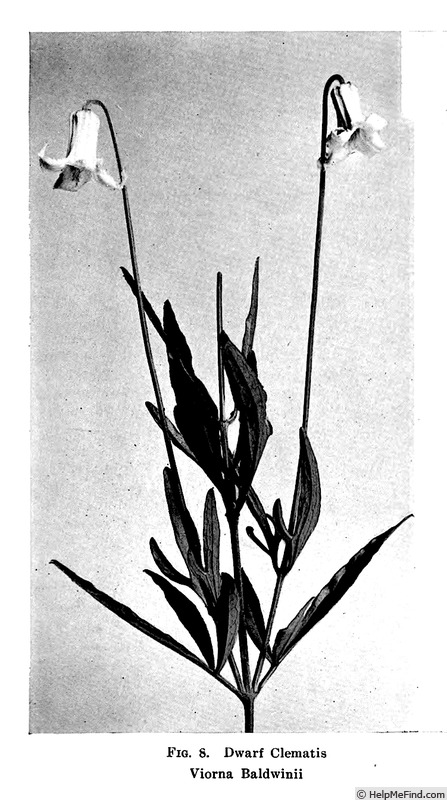|
|
'Viorna baldwinii' clematis Description

Photo courtesy of scvirginia
Bloom:
Light blue or rosy lavender to purple mingling; often having a striped effect; inside is creamy white. Mild fragrance. Average diameter 1". Small, single, bell-shaped, hyacinth-shaped, nodding, ribbed, ruffled edge, veined bloom form. Early spring to late summer, autumn.
Habit:
Compact, upright.
Height: 1' to 2' (30 to 60cm). Width: 1' to 2' (30 to 60cm).
Growing:
USDA zone 9a through 10b. Can be used for landscaping. Best in partial shade. Needs a warm, frost-free situation. shade tolerant. sun or shade. Tolerates partial shade.
Patents:
Patent status unknown (to HelpMeFind).
Parentage:
If you know the parentage of this clematis, or other details, please contact us.
Notes:
This non-vining species is endemic to central and southern parts of the U.S. state of Florida. According to the Florida Native Plant Society web site, "in full sun areas, this plant will become close to dormant in the summer. Cutting back dried out foliage will stimulate new growth in the Fall."
According to the Lady Bird Johnson Wildflower Center's Native Plant Information Network, "Long stalks each bear a solitary, nodding, pink to bluish- lavender, bell-shaped flower."
This clematis was discovered in 1838, and named for William Baldwin (1779 - 1819), an American physician and botanist whose plant collections were invaluable to the discoverers of this species, John Torrey and Asa Gray.
|